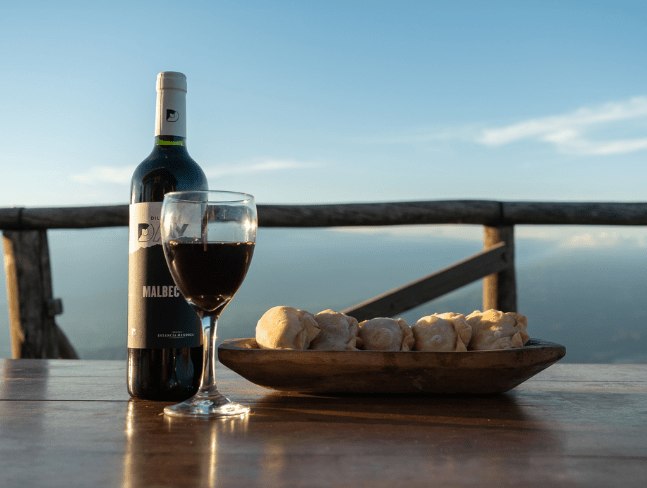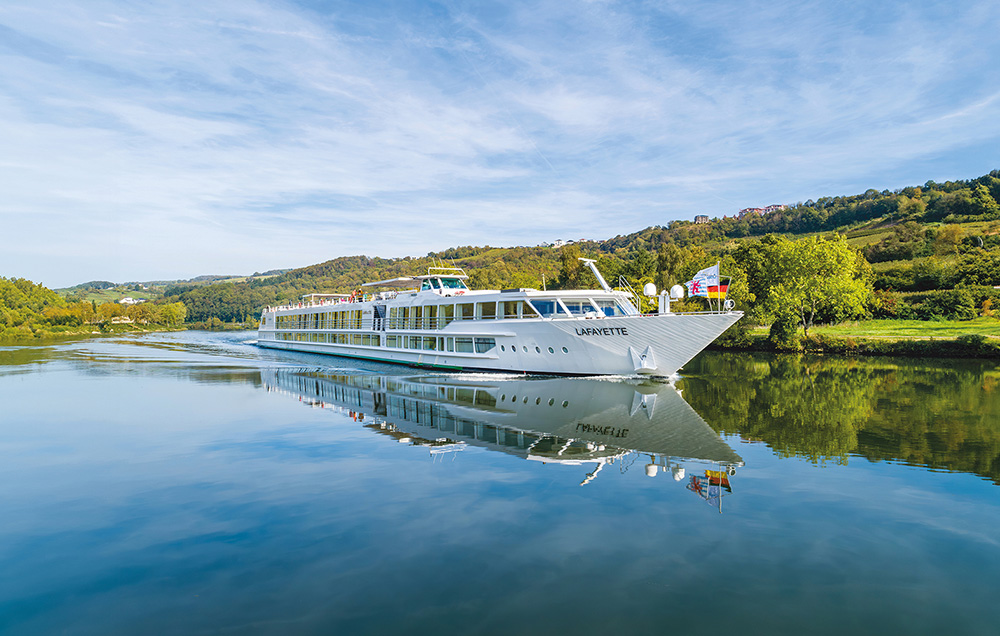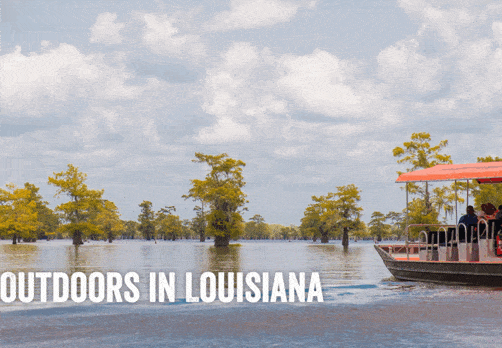An Alternative Wine Route: Wineries and other Destinations in Northern Argentina

Terroirs, varietals and sensory experiences that test your taste buds: in Argentina, wine is always the star of meetings, barbecues, and gatherings with friends and family. And, while Mendoza represents 70% of the local production and is internationally renowned for its Malbec and spectacular proposals, the northern region also offers other interesting places to discover on the national wine route. The colourful mountains, the reddish earth and the altitude as a condition make the perfect combination to enjoy a memorable circuit through seven provinces. Food and wine pairing always play a leading role, as well as walks along vineyard trails and excursions to immerse yourself in the northern landscapes.
1) Salta
This is one of the most sought-after locations in the region, as along 530 kilometres through the Calchaquí Valleys, one of the best versions of Salta wine can be found. Here, a peculiar harvesting altitude, ranging from 1750 metres above sea level to 2700 and 3015 in localities such as Molinos and Payogasta, provide an optimal growth of the grapes, with excellent soil and climate. But this phenomenon began much earlier: the Jesuits started the plantations in the 18th century and, since then, they have been improving and expanding the number of wineries available for consumption.
Cafayate, a small town located in the south of the province, stands out as a top destination for wine enthusiasts. This charming town boasts over 2720 hectares of vineyards, representing 75% of the total number of vineyards in the entire province, as well as the largest number of wineries in the region of the valleys. It also hosts the largest winery in Salta: El Esteco. Besides, visitors can visit other wineries such as Piatelli, one of the most modern ones, Yacochuya, El Porvenir, Vasija Secreta, Nanni, El Tránsito, Amalaya and Finca Las Nubes.
The route continues beyond Cafayate through the departments of Molinos, which includes the Colomé winery, San Carlos, Angastaco, Cachi and Seclantás.
Now, when it comes to grape varieties, Salta’s must-try is the unique Torrontés. Argentina is the only producer of this white grape, whose scent evokes white flowers and citrus fruits, and in the mouth it is fresh and aromatic, with the right balance between acidity and sweetness. The thermal amplitude of the place makes the temperatures change abruptly from day to night, which contributes to the slow ripening of the grapes, thus preserving the aromas and the natural acidity of the variety. These characteristics of Torrontés make it a perfect match for the empanadas salteñas, a gastronomic classic in this region and all over the country. These small pieces of stuffed dough are particularly special in Salta, where they are filled with knife-cut meat, onion, chopped hard-boiled egg, green olives, cumin, and paprika.

2) Jujuy
Another destination noted for its high-altitude wines: ripening is optimal due to the thermal amplitude and the wind. Malbec and Cabernet Sauvignon, among others, are added to the list. The Quebrada de Humahuaca is the backdrop for this wine route. Its impressive natural beauty, cultural history and geological relevance led it to be declared a World Heritage Site by UNESCO. The reward is double: you get to know an emblematic site of the country and, in the meantime, you can taste some of the most matured wines in Argentina.
Together, the local producers generate approximately 15,000 bottles a year in the region. And, while there are regions that cover more hectares, the wines produced in Jujuy continue to grow in demand, tastings, wineries, and restaurants. So, which wineries to visit? The Fernando Dupont Winery, in the locality of Maimará, is framed among the colours of the Paleta del Pintor and elaborates high altitude wines. Viñas del Perchel is located between Tilcara and Huacalera, at 2625 metres above sea level. Viñas de Uquía is a lodge that hides a small winery considered the highest in America and Europe. They produce organic wines and their star bottle, Uraqui Minero Corte A 2016, won plaudits from Tim Atkins, the prestigious Master of Wine, in his 2018 report. In addition, the Yacoraite Vineyards feature some of the most sophisticated architecture in the area, set in a rustic natural landscape at very high altitude.

3) La Rioja
The Torrontés variant from La Rioja deserves its own chapter, as it leads the way on the map of this grape variety and on the wine route. Being part of the northwest region of Argentina, the climatic conditions are similar to the rest of the provinces and, therefore, the dry, warm weather with little rainfall is ideal for cultivation. The valleys of La Rioja will seduce anyone wishing to take a trip through its red, yellow and green lands. Apart from its greatest attraction, the Talampaya National Park, the roads of vineyards are among the podium of musts in this red earth province. There are more than twenty wineries in the region, some of which are family-run and others of an industrial nature. What they all have in common is that they seek to transmit the purest essence of La Rioja’s Torrontés and other grape varieties to those who are curious about the tasting experience.
Which places should you visit for a sensorial wine experience? The Familia Sacavino Arrieta Winery is located in the town of Los Palacios and delivers a full-blooded Torrontés from La Rioja called Sumalao. Bodega Aicuña was established by local winemakers and has become an ever-growing winery. Haras San José offers tastings with local gastronomy and different wines, all of them oriented to make the most of the experience. Valle de la Puerta Winery, in the Famatina Valley, stands out for their elaboration of red wines such as Malbec and Bonarda.

4) Santiago del Estero
Santiago del Estero is also a favoured destination for Argentina’s iconic grape. In the town of Beltrán (Robles), the province unveils a little-known side that deserves a prominent role as an experience. When the sun goes down and the sky becomes a canvas of stars and darkness, a new adventure begins. This includes tasting local wines, guided meditation sessions, the opportunity to explore local recipes that will challenge the palate, and the chance to contemplate the starry sky with the help of binoculars and telescopes. Finca María Pilar is the first winery in Santiago certified by the National Institute of Viticulture and offers a walk through the vineyards, a criollo lunch including wine tasting, tastings of goat cheese and other local products.

5) Catamarca
A place with the Andes Mountains to the west and plenty of sierras, archaeological sites, adobe roads and high dunes. A place where nature grows without too much effort and there are activities in every single corner. One of Catamarca’s attractions is undoubtedly its own wine itinerary. On the border with Tucumán, the town of Santa María (within the Calchaquí Valley) is one of the most suitable for the production of high altitude wines such as Barbera, Malbec, Bonarda, Syrah and Tannat. The iconic Ruta 40 joins with Ruta 60 to connect other impressive valleys: Tinogasta and Fiambalá. The sandy soils and mild inland weather favour the elaboration of high quality premium wines. The Hualfín winery, at 1568 metres above sea level, is equipped with state-of-the-art technology and impressive machinery, which allows for the production of numerous kilos of Malbec and Torrontés grapes.
West of Catamarca lies Tinogasta, a town sheltered by the majestic and beautiful Seismiles, the highest mountain range in Argentina, whose peaks surpass 6000 metres above sea level. In this area you will find Bodega Veralma, another opportunity to discover high altitude wines.
In the Pomán Valley, in the locality of Siján, lies El Manchao, an imposing hill whose highest peak rises to 4561 metres above sea level. More than a century ago, an agricultural tradition began at its base, and has endured through the generations and continues to advance today: the Michango winery. They produce wines with complex colour and aroma, as well as a structure that is a unique and unmistakable reflection of their terroir.

6) San Juan
The second most active province in the country’s wine industry, a significant achievement for a place where wine plays such a prominent role. Around 16% of its vast territory, characterised by picturesque valleys and mountains, is dedicated to the production of this treasured elixir. While Syrah is the leading variety locally, Torrontés undoubtedly takes the lead when it comes to white wines.
Here, arid soil and constant sunshine give rise to fertile vineyards that are home to both traditional and modern boutique wineries. The latter, equipped with state-of-the-art technology, venture into new techniques in the wine industry, resulting in award-winning wine varieties both nationally and internationally. The wine route in this region covers five valleys: Calingasta, Pedernal, Tulum, Ullum-Zonda and Fértil. Several wineries open their doors to the public, creating a unique wine tourism experience in the country.
In Tulum, you will find Viñas de Segisa, Marale Wines, Las Marianas, Callia, El Milagro and Bodega Argus. The Ullum-Zonda area offers Apotema or Finca Sierras Azules, two excellent representatives of the province. The Pedernal Valley, in turn, is located between 1100 and 1500 metres above sea level, 150 kilometres north of the city of Mendoza and almost 100 kilometres south of San Juan, the capital of the province. Here you can find wineries such as Pyros Wines of Salentein, Guarida del Malbec and Graffigna Yanzon. Lastly, Calingasta features the Andes Mountains and foothills on the other side, along Route 40 where you can visit wineries such as Entre Tapias, Bodega del Carmen, Los Dragones, 35.Cinco or Alta Bonanza de los Andes
7) Tucumán
This is a must when visiting the northwest of Argentina. The charm of local grapes is experienced in several provinces, including Tucumán, which is no slouch in this respect. Malbec and Torrontés stand out on a route that covers approximately 100 kilometres in the heart of the Calchaquí Valleys, where vineyards range in altitude from 1750 to 3000 metres above sea level. Along the way, the iconic Route 40 meets Route 307, creating a landscape of vineyards and wineries. Both local and large-scale producers are devoted to growing one of the country’s most prized fruits. This results in a tasting experience that combines perfectly with the rich regional food. Tucumán is also home to the only winery in Argentina (and third in the world) managed and run by an indigenous community: Bodega Los Amaichas. This community belongs to the Gran Nación Diaguita (Great Diaguita Nation) and has a political system headed by a Cacique (Chief), a Council of Elders and an Assembly. Creating the winery was a wonderful way to become part of society. Around 60 families work together to produce truly exceptional wines in harmony with Mother Earth. The region’s gem is Sumak Kawsay, which in Quechua means ‘the good life’.

Learn more about Visit Argentina
Have your say Cancel reply
Our emails to you has bounced travelmole.com Or You can change your email from your profile Setting Section
Your region selection will be saved in your cookie for future visits. Please enable your cookie for TravelMole.com so this dialog box will not come up again.
Price Based Country test mode enabled for testing United States (US). You should do tests on private browsing mode. Browse in private with Firefox, Chrome and Safari
You can see how this popup was set up in our step-by-step guide: https://wppopupmaker.com/guides/auto-opening-announcement-popups/
Subscribe/Login to Travel Mole Newsletter
Travel Mole Newsletter is a subscriber only travel trade news publication. If you are receiving this message, simply enter your email address to sign in or register if you are not. In order to display the B2B travel content that meets your business needs, we need to know who are and what are your business needs. ITR is free to our subscribers.
 United Kingdom
United Kingdom United States
United States Asia Pacific
Asia Pacific

























CLIA expands trade support with expedition event
Qatar Airways adding Manchester flights
Jet2 unveils Samos as new Greek destination for summer 2026
EU entry-exit system delayed again
ATC strike in Greece could disrupt flights this week